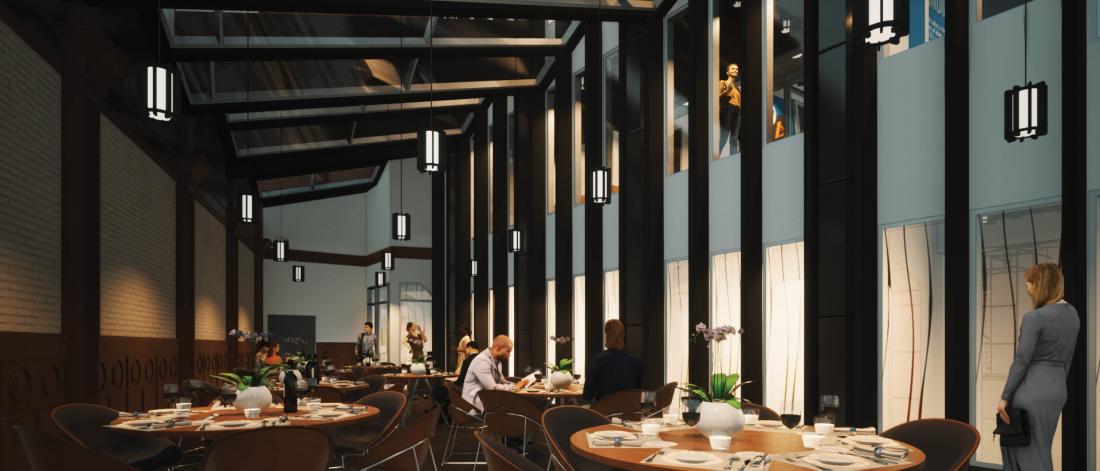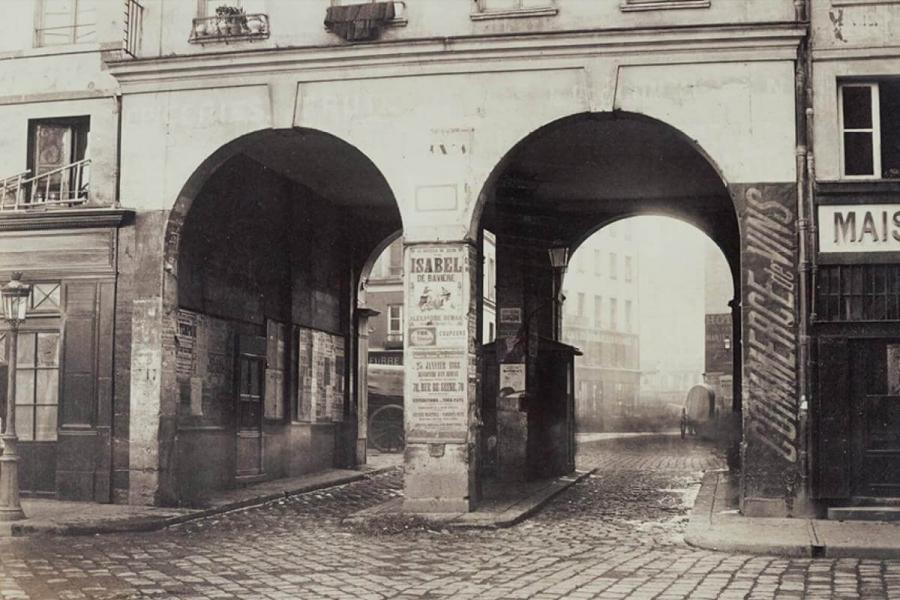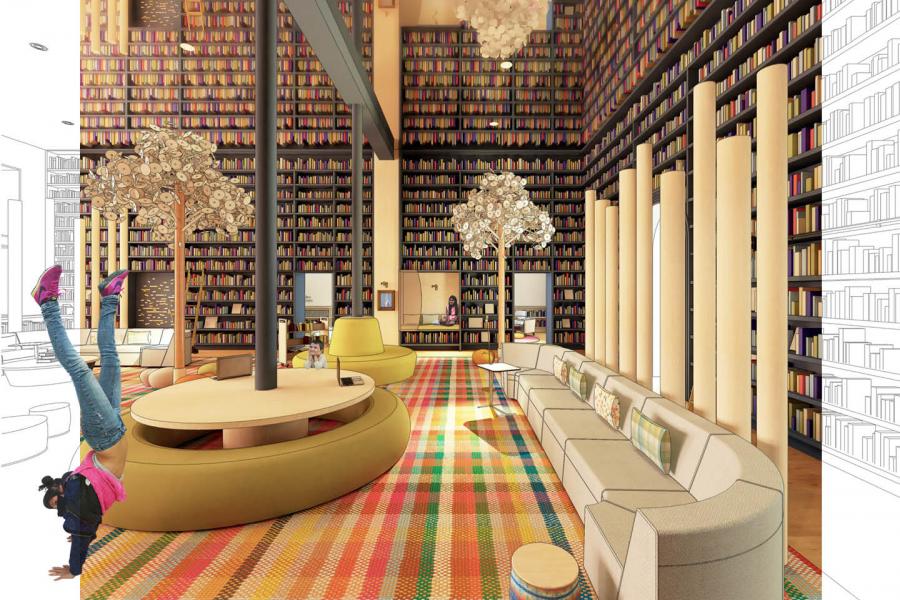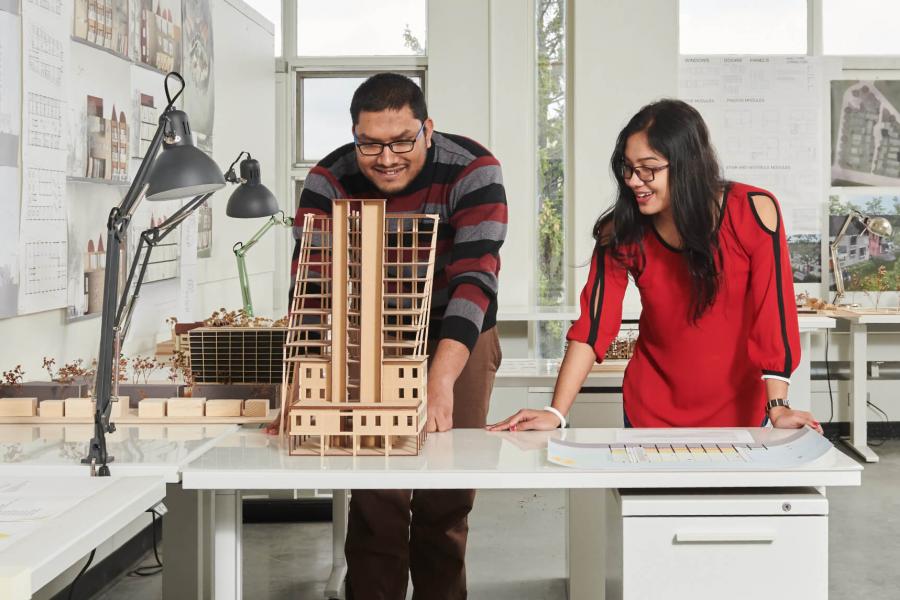
Study with us
Program details
The Master of Interior Design (MID) program prepares students to work nationally and internationally at the forefront of the profession.
First-professional program
Expected duration: 2 years
Tuition and fees: Two years tuition, then continuing fees in subsequent years (refer to Graduate tuition and fees)
The first-professional program is directed towards those interested in pursuing a career in Interior Design practice. The program emphasizes the creation of human-centred and context-based design solutions that respond to the needs of contemporary life.
The course of studies consists of the design studio and support courses that develop the methods, processes, technical and theoretical foundations of interior design. There are opportunities for international and cross-cultural study through exchange programs and design studios. Students are required to participate in either a work experience or co-op program.
Post-professional program
Expected duration: 1.5 years
Tuition and fees: One year tuition, then continuing fees in subsequent years (refer to Graduate tuition and fees)
The post-professional program is directed to those who already hold a first-professional qualification in Interior Design. The program has a research orientation and is intended to further the knowledge base in specific areas of the discipline.
Faculty of Architecture’s Cooperative Education/Integrated Work program (Co-op/I) Graduate Option
Students must complete two 10-week work terms to have the Co-op/I option acknowledged on their graduation parchment. Each term requires submission of a written report and portfolio covering the work completed for the professional assignment. These are above and beyond graduate course requirements.
Accreditation
The Interior Design professional program at the University of Manitoba is a recognized accredited program that meets the standards of the Council for Interior Design Accreditation (CIDA). In addition, the First-Professional Masters of Interior Design degree meets the educational requirement for eligibility to sit for the National Council for Interior Design Qualification (NCIDQ) Examination.
Pre-master's option
Expected duration: 1 year
Tuition and fees: One year tuition (refer to Pre-masters graduate tuition and fees)
Students with undergraduate course deficiencies may be admitted to the Pre-master's program to complete the background requirements. Successful completion of the pre-master’s program does not guarantee admittance to the graduate program. Students who wish to continue on to the graduate program must apply for admission.
Students in the Pre-Masters program are normally required to complete 30 credit hours (two terms) of coursework. After these two terms, students are eligible to apply to the Master’s program.
Admission requirements
In addition to the admission requirements described here, all applicants must meet the minimum admission and English language proficiency requirements of the Faculty of Graduate and Postdoctoral Studies. Meeting these requirements does not guarantee acceptance into the program.
Applicants to all Interior Design programs must have a satisfactory English language proficiency test score, if applicable. Test scores must meet the Faculty of Graduate and Postdoctoral Studies minimum requirements except for the following tests, which require higher scores than the FGPS minimum:
- CAEL: 70
- CanTest - Listening and Reading: 4.75
- CanTest - Writing and Oral: 4.0
- IELTS: 7.0
- TOEFL - iBT: 94
First-professional program admission requirements
To qualify for the Master of Interior Design first-professional program, you must have a minimum of
- an undergraduate degree in Interior Design
- or an undergraduate degree in Environmental Design (Interior Environment Option) from the Faculty of Architecture.
Applicants with degrees in other fields such as Architecture, Landscape Architecture or Industrial Design are assessed on a case-by-case basis for entry into the Master of Interior Design program.
Post-professional program admission requirements
To qualify for the Master of Interior Design post-professional program, you must have a minimum of a CIDA undergraduate degree in Interior Design plus three years work experience in the field.
Pre-master's admission requirements
To be considered for the pre-master's program, you must have a minimum of a bachelor's degree.
How to apply
Each year, applications for the MID program are accepted for September entry only. A supervisor is not required at time of application.
Applications must be completed online and include several parts:
- Application fee (non-refundable)
- Unofficial copies of transcripts and degree certificates
- Current CV
- Two letters of recommendation (must be requested from within the application)
- Statement of intent
- Research proposal (Post-professional program only)
- Digital portfolio (PDF Format, maximum size 20MB)
- Proof of English language proficiency, if required
When applying, select "MID" for the first-professional program or "MID (Research)" for the post-professional program.
Please read the Faculty of Graduate and Postdoctoral Studies online application instructions before beginning your application.
MID Portfolio requirements
The portfolio should contain a comprehensive representation of the applicant’s own work to illustrate creative potential, technical background and experience, and graphic communication skills. The portfolio shall include samples of both visual and written work.
Format: PDF (20 MB max)
Pre-master's portfolio requirements
Portfolios are communication devices that demonstrate design interests, inclinations, creative abilities and potential across a wide spectrum of media and expression.
For Pre-master's applications, the following guidelines should be able to advise on the content of the portfolio.
- Electronic submission (format: PDF maximum size of 20 MB) or Hard Copy (8.5” x 11” portrait format).
- Clearly indicate your name on the portfolio.
- Provide a table of contents or consistent chapter identification at the beginning of the portfolio.
- With every image or project, include a brief explanation or description. Brief and succinct descriptions are preferred over lengthy or rambling narratives.
- Previous schoolwork as well as independent or self-initiated work may be included. In the case of schoolwork, include the project program issued, the main objectives of project, the instructors’ names, the dates and duration. Also include written evaluations and grades received (where available). If group or office work is presented, clearly indicate your specific role in the work (proper crediting is required for all work presented in the portfolio).
- Do not include additional CDs, videos, films, slides, etc. All work should be integrated into the portfolio.
- Do not submit unclear or poorly reproduced photographs, reproductions or drawings.
What to include
The portfolio should document and convey your design interests, inclinations and passions. These can range from passions underlying hobbies to those that led you to pursue your previous field of academic study. The Admissions Committee is interested in projects that you do on your own, as well as those done for school assignments. These projects can be photographed or copied with accompanying brief descriptions to form the basis of the portfolio.
This is a list of examples that could be included or form the basis of the portfolio:
- Written: Poetry, articles, travel journals, research papers, music, etc.
- Graphic: Photography, sketches, drawings, paintings, or technical drawings, etc.
- Constructed: Photographs, drawings and sketches of built projects. This could include examples such as: ceramics, models, sculptures, hobbies, instruments, theatre sets, renovations to buildings, objects, cars, and/or photo-documentaries of experiences with building construction.
The body of work should convey the applicant’s creative experience and/or graphic communication skills attained to date.
Application deadlines
Learn more
Contact us
Admission and application inquiries
Faculty of Graduate and Postdoctoral Studies
Room 500 UMSU University Centre
65 Chancellors Circle
University of Manitoba (Fort Garry campus)
Winnipeg, MB R3T 2N2 Canada
graduate.admissions@umanitoba.ca
Phone: 204-474-9377
Monday to Friday
8:30 a.m. to 4:30 p.m.
Program inquiries
Faculty of Architecture
201 John A. Russell Building
84 Curry Place
University of Manitoba (Fort Garry campus)
Winnipeg, MB R3T 2M6
gradarch@umanitoba.ca
Phone: 204-474-6578
Fax: 204-474-7532















